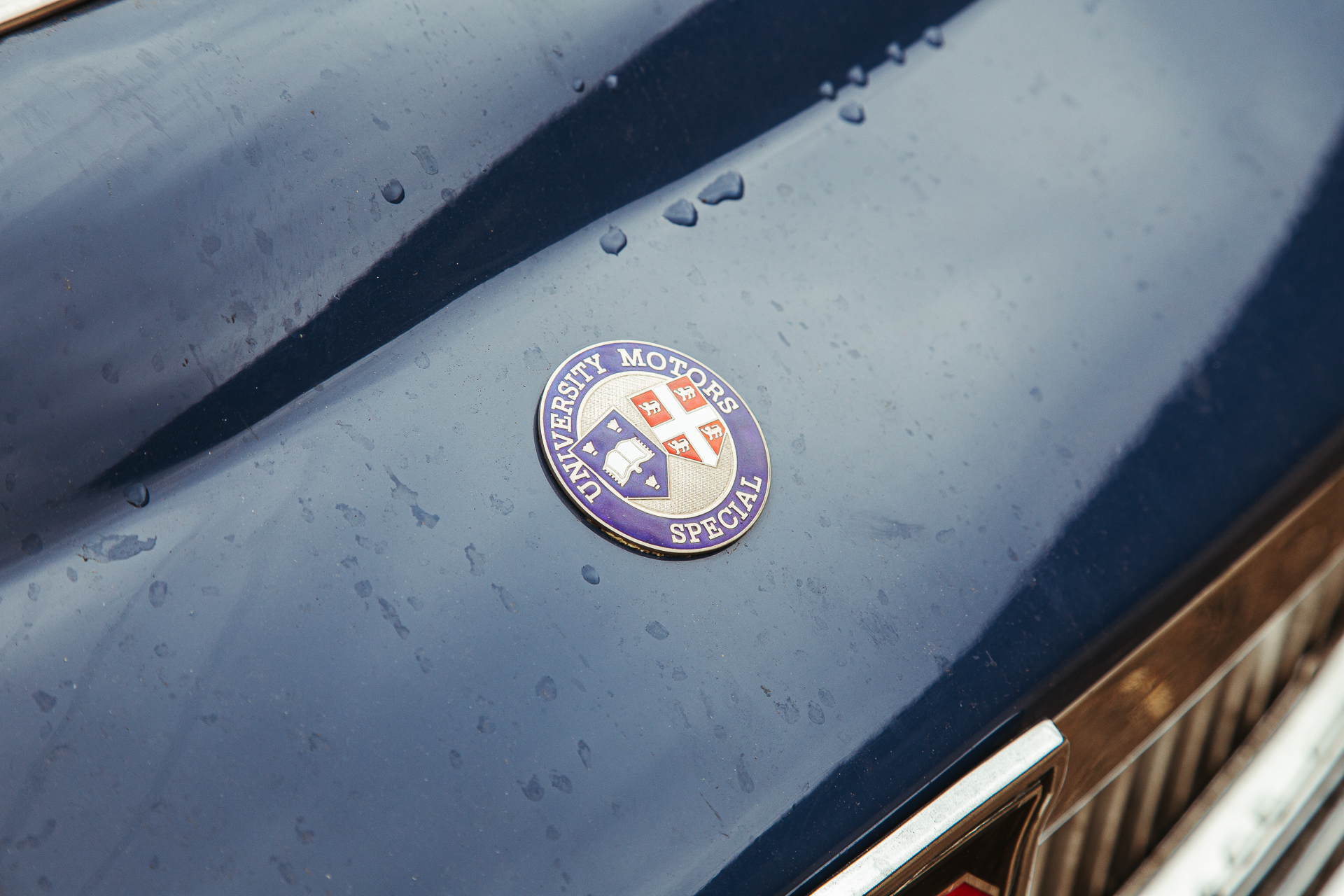
In MG folklore, nothing sparks debate like the words ‘University Motors’. A misty, murky and sometimes erroneous rabbit hole which is filled with wildly varying statistics and numbers. What is known, is that University Motors was an MG dealership.
University Motors was the largest MG dealership for London and the Home Counties. From the 1930s, they supplied the public with sportscars, family cars and commercials until the 1970s. Where we will be pointing our interest happens in and around the late 1960s…
The MG C, a 6-cylinder variant of the hugely popular MG B, was introduced by British Leyland in 1967. Originally the car was reported to be the replacement for the fabulous Austin-Healey 3000. The legendary straight-six powered sports car that would serve as the inspiration for the upcoming MG C. Offered in both Roadster and Hardtop, the MG C’s would have a varied reception in the automotive press at the time. Although the more powerful 3-litre Austin-derived 6-cylinder engine was a welcomed addition by many, the extra 200lbs of weight in the front and revised suspension did take its toll on the nimble and playful nature people had loved from the MG B.
In 1969, less than 2 years after production had begun, British Leyland decided to pull the plug on MG C. Slow sales, an increase in fuel costs and the legendary MG B GT V8 looming on the horizon all contributed to the end of the production of the MG C.
This is where University Motors enters our story.
Legend handed down says that in 1969, the end of the production run, University Motors bought up the remaining MG C’s from British Leyland. The total amount varies though. Some sources say that as many 141 cars were bought by UM from Abingdon and delivered between September and December of 1969, but some have said that number could be as high as 176 or as a few as 90. Either way, a number of both Roadster and GT MG C’s found their way to the Hanwell dealership to be put into storage.
Some of the MG C’s would be sold as they were – standard, off-the-line 6-cylinder cars. While others would have special bits and pieces done to them for their owners by such garages as Wood & Pickett (known for their bespoke, unique Mini’s) to their desired taste. Because of this, no two University Motors ‘Specials’ were the same and only around 14 – 21 of the 150+ cars were modified.
There were special engine tuning options available – Such as the now infamous ‘Stage II’ works carried out to the Downton engines. This would see an increase in both performance and fuel economy thanks to some not inconsiderable cylinder head work which pushed the compression up to 9.5:1, some beautiful inlet porting and a tubular exhaust manifold. All though it only saw a small increase in horsepower, the Stage II work would wonderfully increase the low-end torque of the engine and help it to come alive. There were some cars optioned with the wilder Stage III Kit for the Downton engines, but only 3 cars are believed to have ever had this fitted.
On the undersides of the UM ‘Specials’ there were also changes. The dampers were changed out to either Koni or Spax units to help with the added weight and also to bring back some of the dynamics which had been removed from the standard MG C’s because of their considerable reworks. There were also several wheel options to choose from for a ‘Special’ with incredible alloy wheels from companies such as Cosmic, J A Pearce and the quintessential MiniLites.
Physically, there were also changes available to the Specials. Anything from flared arches, different grilles, Matt Black paint accents to wild bespoke bodywork by coachbuilders. Anything was possible just to sell off the cars in stock. There were badges fitted to the cars, some would say simply University Motors, others University Motors Special. Some were emblazoned with Downton plaques but all of them never seem to be in a uniform and consistent place. The standard MG C bonnets, sporting their impressive power bulge, would see some of the cars modified with the teardrop. A special addition to the bonnet to make way for the triple-SU’s that hid under the bonnets of Stage II and III cars, identifiable also by the twin rear exhausts.
With the cars still in stock, University Motors would supply MG C’s well into the early 1970s. Because of their tuning and performance upgrades, many people sought to replicate the identity of these cars. Aftermarket badges, rocker covers, bonnets and everything else under the sun sprung up to allow people to give the impression that theirs was one of the mythical ‘Specials’.
Many MG C’s and MG B’s wore University Motors badges because of being supplied from the outfits Hanley dealership, over 40 years they supplied literally thousands of cars which made their way across the UK, some pretending to be what others truly had. And others slipping under the radar in obscurity. No definitive records are kept as to which cars had what and when, they have unfortunately disappeared into the annuls of time as the dealership closed its doors for the final time many years ago.
With the workshop lights of the dealership turned off for the final time and the dust beginning to settle on the floors – no longer would the sound of rampant straight-sixes fill their storied walls. No longer would these magnificent machines be created but also, no longer would the world know for definite. Even according to accounts by ex-University Motors employees the numbers and specifications of certain cars vary wildly.
This all adds to the mystique, the magic and the mystery behind those hallowed words which adorn the badges – University Motors Special.
